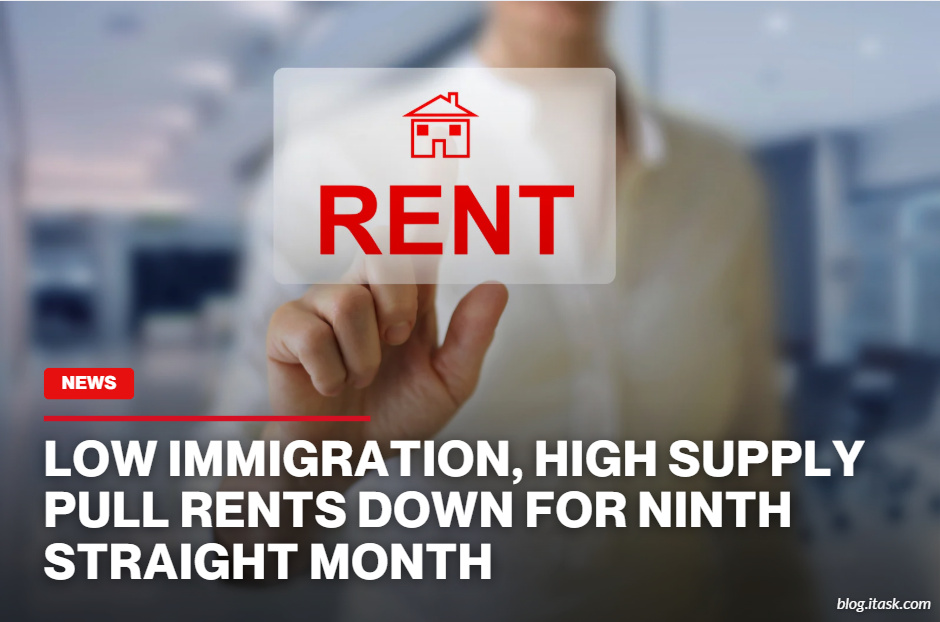Low Immigration, High Supply Pull Rents Down For Ninth Straight Month
Low Immigration, High Supply Pull Rents Down For Ninth Straight Month

Canadian rents dropped for the ninth month in a row this June, as two main forces joined to soften the rental market: slower immigration and a rising number of available homes. At the national level, average asking rent slid by 2.7 per cent compared to the same time last year, settling at about $2,125 per month. Big cities and costly markets saw the most notable declines so far.
The biggest rent drops appeared in the secondary market such as condos, townhomes, and single-family houses. Condo rents fell by 4.9 per cent, and rents for single-family homes and townhomes dropped 6.6 per cent year over year. In contrast, purpose built rentals such as apartment buildings saw only a mild decline of 1.1 per cent.
A key reason is that Canada's immigration numbers have slowed. Newcomers, especially students and temporary workers, typically rent when they arrive. With fewer arrivals, demand for rentals has eased. That, along with an increase in rental supply, especially in large cities like Vancouver, Toronto, and Halifax, has left more homes sitting empty. Many landlords are responding by lowering rent or offering incentives.
New rental buildings have been completed at a faster pace than usual, adding significantly to available supply. Especially in major areas like Toronto, Vancouver, Calgary, and Halifax, this new supply together with weaker immigration has pushed vacancy rates higher. As a result, more landlords, particularly in the secondary market, are lowering asking rents to fill units. By contrast, landlords of purpose built rentals have relied on perks such as a month of free rent or moving allowances to attract tenants.
Regionally, British Columbia and Alberta saw the steepest rent declines, both recording about a 3 per cent drop year over year. Ontario followed with around 2.3 per cent. Interestingly, Saskatchewan stood out as the only province to post an increase in rents, up approximately 4.2 per cent. Growth in places like Saskatchewan suggests local differences in housing markets even while the broader national trend points downwards.
Still, despite the nine straight months of falling rent, prices remain well above where they were a few years back. Rents are nearly 12 per cent higher than in June 2022 and about 4 per cent higher than June 2023. In many markets, affordability remains a challenge for renters even as rent trends soften.
